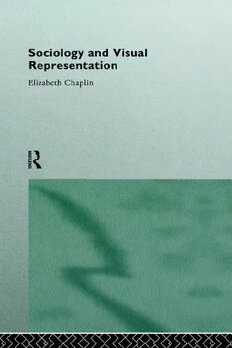
Sociology and Visual Representation PDF
317 Pages·1994·8.257 MB·English
Most books are stored in the elastic cloud where traffic is expensive. For this reason, we have a limit on daily download.
Preview Sociology and Visual Representation
Description:
Recent technological developments have transformed our culture into a much more visual one. This book is concerned with still images, diagrams, and the visual presentation of the written text. It focuses, especially, on those recent texts which have changed the relationship of analysis to topic of analysis by incorporating visual representation into the analysis itself. The first section of the book focuses on critical' accounts. It charts the history of critical theories and critical analyses of visual art from the earliest times to the present day. The author shows that photography, critical postmodernism and, above all, feminism have each played a part in blurring the distinction between art and non-art visual representations and in questioning the assumption that the verbal does the analyzing while the visual merely constitutes the object of analysis. The author argues that critical analyses of society are powerful when both verbal and visual dimensions are consciously activated and co-ordinated. The second section charts the history of empirical social analyses of visual art, scientific and other depictions. Again, it highlights those works that make use of the visual dimension, especially in the field of anthropology, and Chaplin includes an account of her own photographic project. Chaplin demonstrates that while depictions can contribute to social science analysis things that words alone cannot, unconventional typography and page layout can also add sociological meaning and contribute to a sound methodological stance. She urges social scientists to make more conscious use of visual representation in their analyses. More importantly, she argues that such a course offers social scientists who are women the opportunity to develop a distinctive women's approach to social analysis.
See more
The list of books you might like
Most books are stored in the elastic cloud where traffic is expensive. For this reason, we have a limit on daily download.
